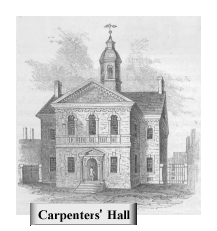Following the American Revolution, the Confederation Congress needed money. The Articles of Confederation did not permit the government to easily tax its citizens. To raise funds to operate the government, the Confederation Congress hoped to sell land in the Ohio Country to the American people. Government officials realized that Native Americans controlled the land. Before any sales could take place, the United States would have to convince the natives to give up their claims on the land.
An agreement was reached in 1784 with certain members of the Iroquois, who surrendered claims to lands in western Pennsylvania and Ohio. Other tribal members were critical of the treaty, claiming that it was concluded under duress and that those Indians who signed it did so without proper authorization. The inevitable result was continued warfare in the area. A final resolution was not reached until the tribes' power was broken during the War of 1812. The motives of the United States in the second Treaty of Fort Stanwix included more than simply answering the frontiersmen’s pleas for more land. Thomas Jefferson, who crafted American land policy during the mid-1780s, was attempting to fashion a revenue-generating procedure to fund pensions for the soldiers of the recently concluded war. If the government were to acquire lands in the Old Northwest, it was hoped that settlers would purchase tracts and provide a means to honor the nation's obligation to the veterans.
The United States of America give peace to the Senecas, Mohawks, Onondagas and Cayugas, and receive them into their protection upon the following conditions:
ARTICLE I.
Six hostages shall be immediately delivered to the commissioners by the said nations, to remain in possession of the United States, till ail the prisoners, white and black, which were taken by the said Senecas, Mohawks, Onondagas and Cayugas, or by any of them, in the late war, from among the people of the United States, shall be delivered up.
ARTICLE II.
The Oneida and Tuscarora nations shall be secured in the possession of the lands on which they are settled.
ARTICLE III.
A line shall be drawn, beginning at the mouth of a creek about four miles east of Niagara, called Oyonwavea, or Johnston's Landing-Place, upon the lake named by the Indians Oswego, and by us Ontario; from thence southerly in a direction always four miles east of the carrying-path, between Lake Erie and Ontario, to the mouth of Tehoseroron or Buffaloe Creek on Lake Erie; thence south to the north boundary of the state of Pennsylvania; thence west to the end of the said north boundary; thence south along the west boundary of the said state, to the river Ohio; the said line from the mouth of the Oyonwayea to the Ohio, shall be the western boundary of the lands of the Six Nations, so that the Six Nations shall and do yield to the United States, all claims to the country west of the said boundary, and then they shall be secured in the peaceful possession of the lands they inhabit east and north of the same, reserving only six miles square round the fort of Oswego, to the United States, for the support of the same.
ARTICLE IV.
The Commissioners of the United States, in consideration of the present circumstances of the Six Nations, and in execution of the humane and liberal views of the United States upon the signing of the above articles, will order goods to be delivered to the said Six Nations for their use and comfort


























